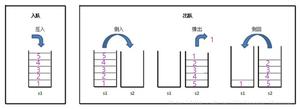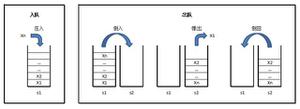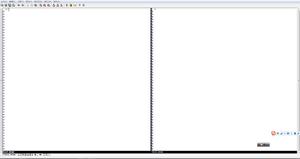蟒蛇 - 比较两个列表,看看是否发生在另一个连续
我一直在试图做一个函数,可以采取两个任何大小的列表(比如说,列表A和列表B),并看到列表B是否出现在列表中A,但是连续且以相同的顺序。如果以上情况属实,则返回True,否则返回False。蟒蛇 - 比较两个列表,看看是否发生在另一个连续
例如,
A:[9,0,**1,2,3,4,5,6,**7,8] and B:[1,2,3,4,5,6] is successful A:[1,2,0,3,4,0,5,6,0] and B:[1,2,3,4,5,6] is unsuccessful.
A:[1,2,3,4,5,6] and B [6,5,3,2,1,4] fails because despite having the same
numbers, they aren't in the same order
我试着这样做使用嵌套循环到目前为止并感到有点困惑,去哪里
回答:
就试试这个:
L1 = [9,0,1,2,3,4,5,6,7,8] L2 = [1,2,3,4,5,6]
c = 0
w = 0
for a in range(len(L2)):
for b in range(w+1, len(L1)):
if L2[a] == L1[b]:
c = c+1
w = b
break
else:
c = 0
if c == len(L2):
print('yes')
break
在这里,你是否L2的元素在L1如果是这样打破了第一循环记得在你离开和L2的下一个元素是一样的下一个元素的l1等。
最后一部分是检查这是否发生的次数与l2的长度相同。如果是的话,那么你知道这个说法是正确的!
回答:
我转换的整个列表变成一个字符串,然后发现字符串的一个子
列表时转换成一个字符串变得
str(a)='[9,0,1,2,3,4,5,6,7,8]' 其中当当我们剥去串变得
str(a).strip('[]')='9,0,1,2,3,4,5,6,7,8' 现在的问题只是转换为
检查是否有在字符串的子 所以我们可以我们在运营商检查子
解决方案
a=[9,0,1,2,3,4,5,6,7,8] b=[1,2,3,4,5,6]
print(str(b).strip('[]') in str(a).strip(']['))
testcase1
testcase2
回答:
如果你的数组不是巨大的,如果你能找到一种方法,你的数组到一个字符串中的每个元素映射你可以使用:
list1 = [9,0,1,2,3,4,5,6,7,8] list2 = [1,2,3,4,5,6]
if ''.join(str(e) for e in list2) in ''.join(str(e) for e in list1):
print 'true'
它只是提出两个字符串从列表,比使用'在' 找到任何accorence
回答:
使用任何功能
any(A[i:i+len(B)] == B for i in range(len(A) - len(B) + 1)) demo
回答:
试试这个:
L1 = [9,2,1,2,0,4,5,6,7,8] L2 = [1,2,3,4,5,6]
def sameorder(L1,L2):
for i in range(len(L1)-len(L2)+1):
if L1[i:len(L2)+i]==L2:
return True
return False
回答:
您可以创建一个可分析的a子列表:
def is_consecutive(a, b): return any(all(c == d for c, d in zip(b, i)) for i in [a[e:e+len(b)] for e in range(len(a)-len(b))])
cases = [[[9, 0, 1, 2, 3, 4, 5, 6, 7, 8], [1, 2, 3, 4, 5, 6]], [[1, 2, 0, 3, 4, 0, 5, 6, 0], [1, 2, 3, 4, 5, 6]], [[1, 2, 3, 4, 5, 6], [6, 5, 3, 2, 1, 4]]]
final_cases = {"case_{}".format(i):is_consecutive(*a) for i, a in enumerate(cases, start=1)}
输出:
{'case_3': False, 'case_2': False, 'case_1': True} 以上是 蟒蛇 - 比较两个列表,看看是否发生在另一个连续 的全部内容, 来源链接: utcz.com/qa/265540.html






